A Wild Walk to Tavy Cleave, Dartmoor
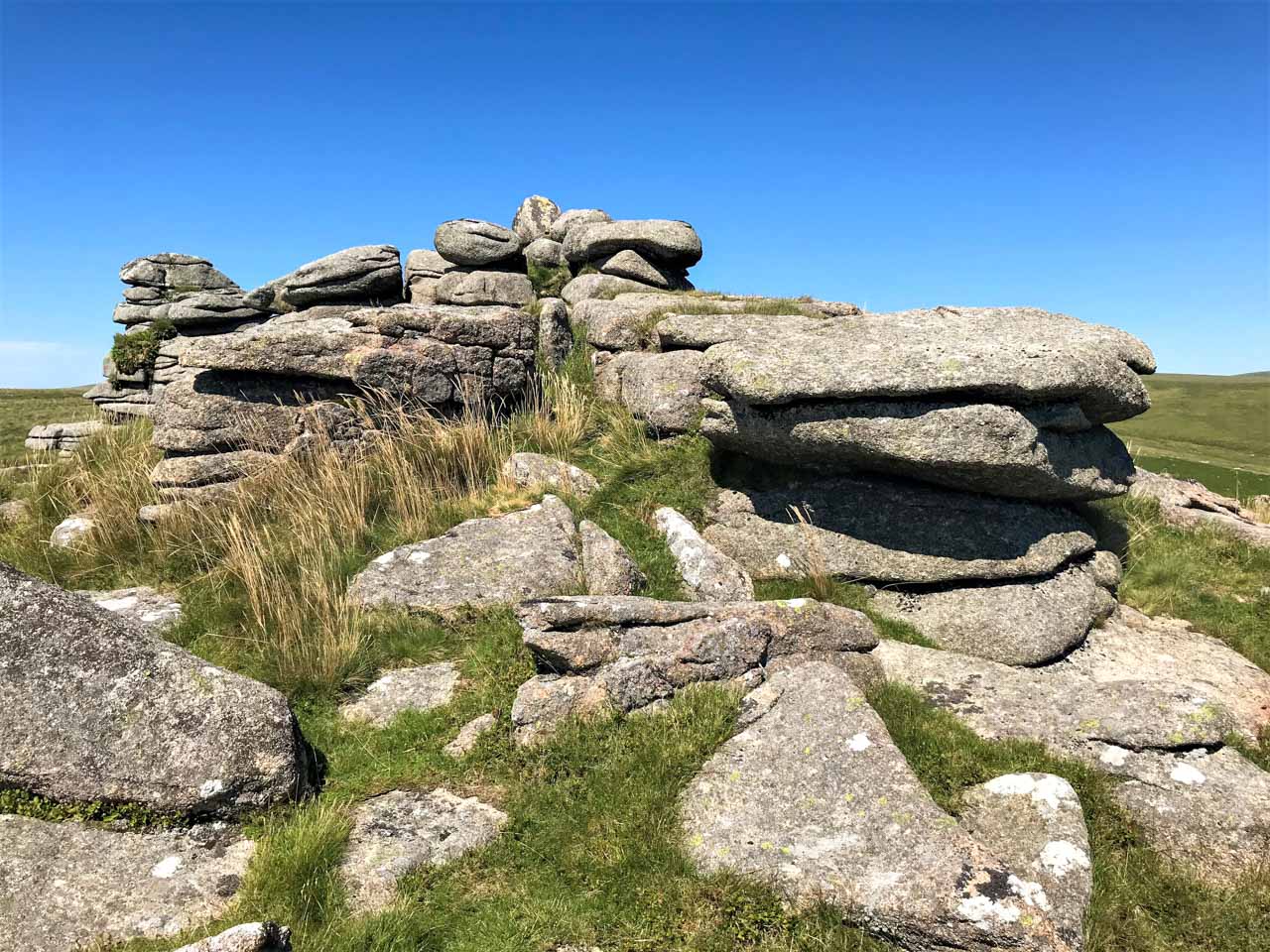
Photo: Ger Tor, Dartmoor
Upland Dartmoor has always been one of my ‘happy places’; somewhere that closets me from the outside, a seemingly ‘out of this world’ landscape steeped in history and folklore. Some refer to it as England’s last great wilderness. But whilst it can certainly be wild, calling it a wilderness often feels a little disingenuous considering the long history of human habitation and our ongoing role in shaping the moorland landscape. Nevertheless, the feel of the rugged, granite crusted land creates a feeling of separation from everyday life for me. It is a land that I grew to love, having spent much of my middle childhood, adolescent, and early adult years living on the moor. And the river Tavy itself (one of the great rivers of Dartmoor) has played a large part in my own sense of identity.
This relatively gentle walk takes us to the upper reaches of the river, where it spills out from the moor and cascades down towards the habitations of Mary Tavy, Peter Tavy and Tavistock. In doing so the river valley passes through a dramatic steep gorge. The esteemed Dartmoor chronicler, William Crossing, was full of praise for it when at the beginning of the last century, he wrote, “this defile is known as Tavy Cleave, and for wild grandeur is unsurpassed throughout the moorland region.” Needless to say, the ancient Cleave has lost none of its “grandeur” over the last 100 years and is an impressive sight more than worthy of the exertion required to reach it.

Photo: Firing range noticeboard, Lane End, Dartmoor
The walk is approximately four miles long and if you give yourself three hours that should allow you to slow down and appreciate its beauty. Parking is at Lane End on the western flank of Dartmoor, not far from the hamlet of Horndon, a few country lane miles from Mary Tavy. Grid reference: SX 53754 82359. The walk takes in the edge of the Ministry of Defence Willsworthy Firing Range and there are certain days throughout the year, when the red flag in the car park is flying, and access is not possible. Check online before travelling, click here.
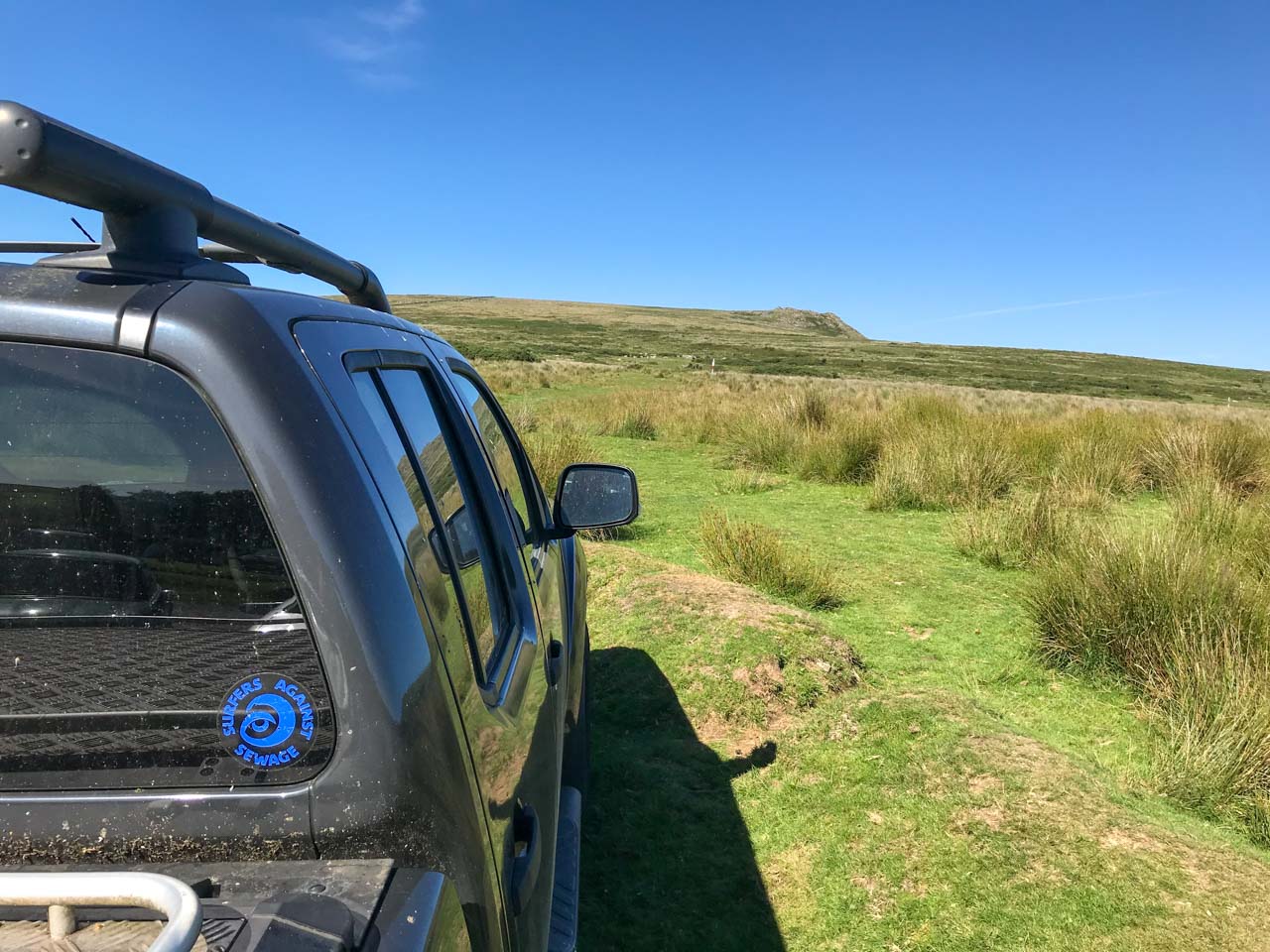
Photo: Nat Tor from Lane End, Dartmoor
Whilst the walk is spectacular at any time of the year, spring and summer are best for spotting wildlife, particularly as the numbers of birds will have increased due to the arrival of migrants. But house sparrows are easy to find flitting around the car park and look to be nesting in the stone walls of the cottage and barn adjacent to it. If you are here during the right months listen out for cuckoos which I often hear from this spot. Directly infront of the car park an area of gorse, bracken and small trees either side of the leat is a good spot for finding willow warblers in the summer and there are always plenty of stonechats around.
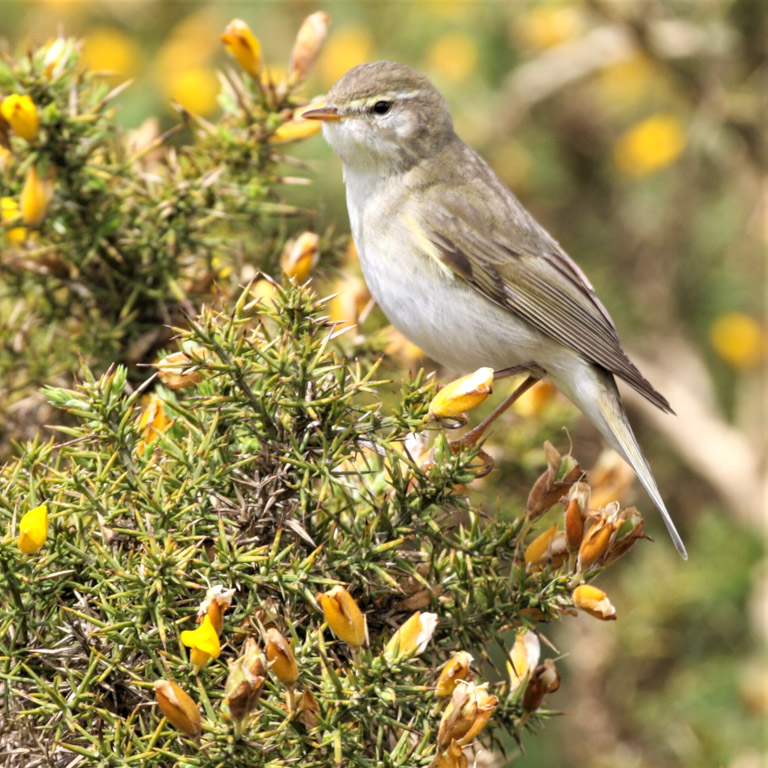
Photo: Willow warbler on gorse
Head north east out of the carpark up the well defined path towards Ger Tor. The hike up to the tor is the most strenuous part of the walk. Many choose to approach the Cleave via the low ground by walking east past Nattor farm and up the river basin. I choose to take the other more direct ‘up and over’ route because I think one’s first view of the gorge is most dramatic from above and I also like to get the hardest part of the walk out of the way early on, if at all possible.

Photo: Stonechat on gorse
Soon after leaving the car park you will cross Mine Leat, spend a moment here to see if there are any small fish in the water. Dartmoor is crisscrossed with leats. These granite lined open watercourses were built to deliver water for industrial, agricultural and domestic needs. I always look at them as natural engineering marvels as those who built them cunningly used gravity and the lie of the terrain to ensure a constant flow of water. As you ascend Nattor Down en route to Ger Tor, look and listen for meadow pipits during the warmer months. You might even see them doing their crazy parachuting display flight. It isn’t any wonder that you find cuckoos as well as large numbers of meadow pipits in the area. As most people know, cuckoos are brood parasites, which means that they lay their eggs in the nests of other birds and, in the UK, meadow pipits are their most common hosts. There are also plenty of common buzzards in the area so keep looking skyward for these relatively large raptors as they spread their wings and wedge shaped tails to soar on thermals.
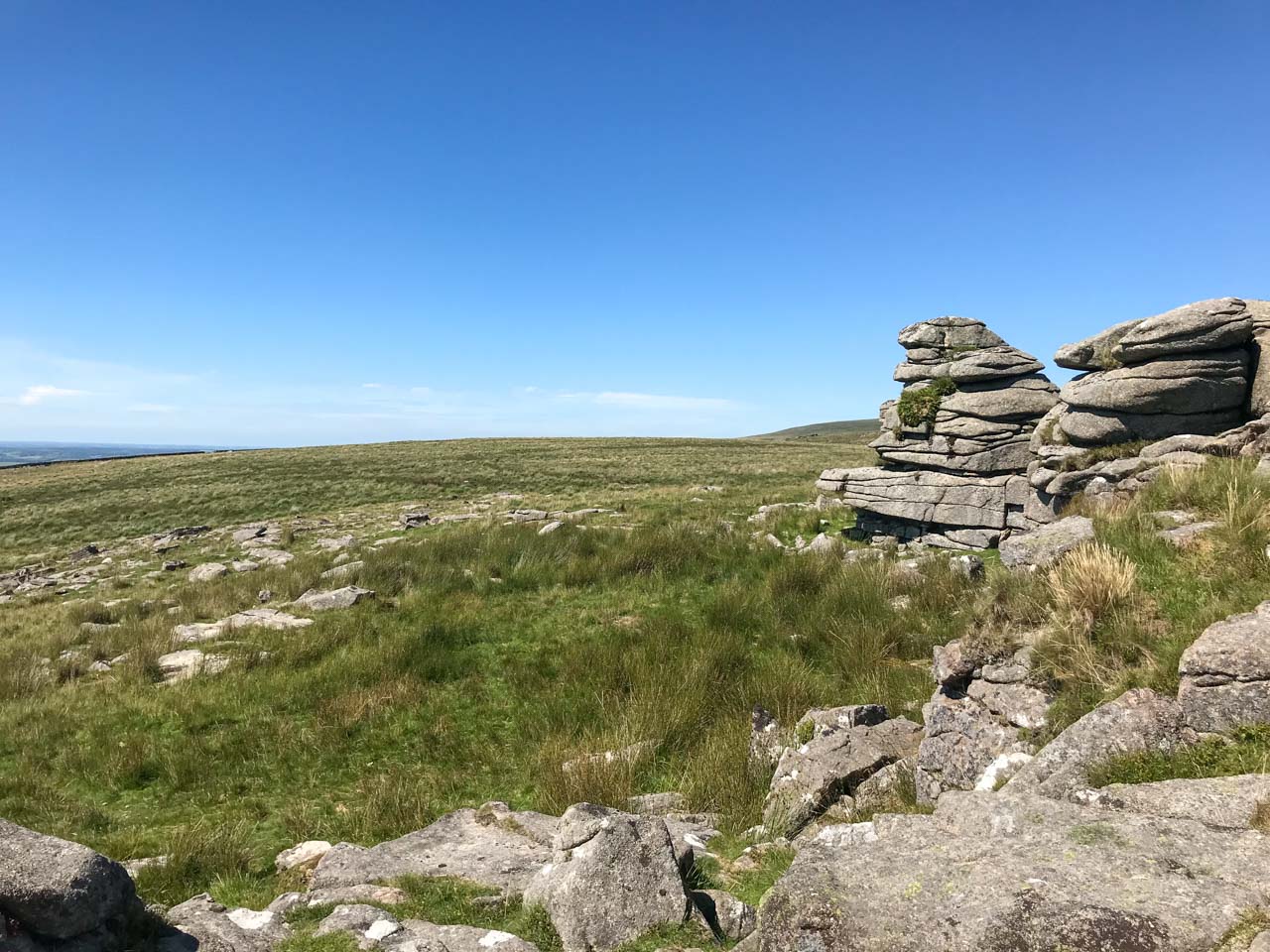
Photo: Ger Tor and Nattor Down, Dartmoor
Once you reach the top of Ger Tor and clamber around the huge granite boulders you really will start to fully feel the presence and solitude of the moor. It commands stunning views to the south western edges of the moor and beyond. To the north and east lie high Dartmoor proper but it is directly below the tor to the south east that you will find your first view of the river Tavy and begin to understand the beauty of the Cleave. Eric Hemery, another Dartmoor obsessive and famous moorland guide and author perfectly described Ger Tor as “The Sentinel of the Cleave”.
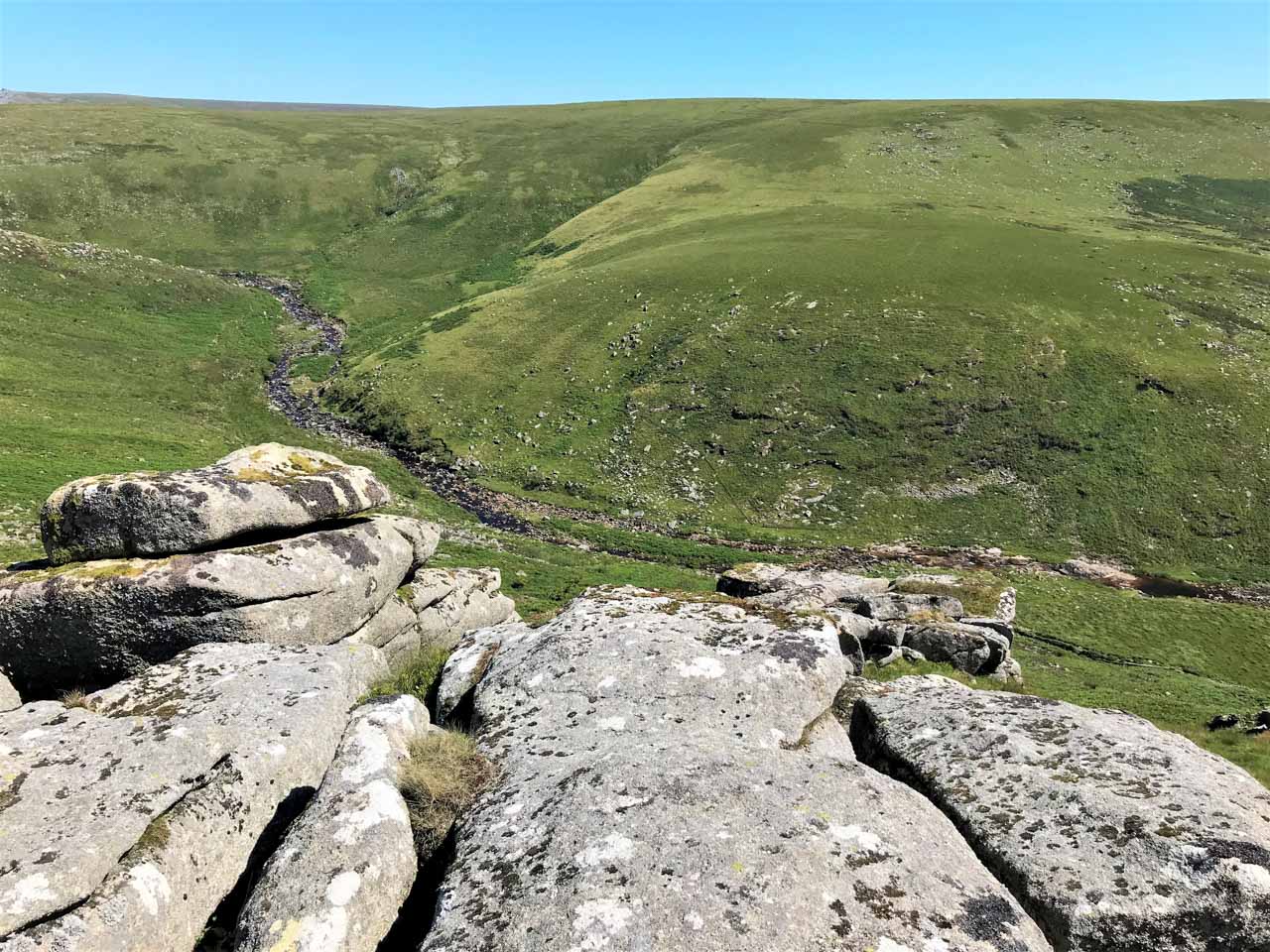
Photo: The Sentinel of the Cleave, Dartmoor.
A number of times I have sat on my perch at the tor and watched a pair of kestrels hunting, sometimes even finding them hovering at eye height. Historically the people of the moor colloquially referred to them as ‘windhovers’. The next onward stretch is a gentle ramble east across a sheep and pony peppered down to Tavy Cleave Tor itself. The path takes the walker right past the remains of a bronze age stone hut with its entrance facing towards the river. Whenever I come across these huts, which are not unusual on Dartmoor, I feel the need to enter and sit a while trying to find a tiny porthole into the past.
For some strange reason Tavy Cleave Tor isn’t warranted a mention on the map. Trust me, it should be. You don’t so much climb the tor as search for the obvious window between the rocky outcrops. Gingerly scramble into it and carefully peer over the edge and you will be rewarded by a most dramatic scene as the tor becomes a sheer cliff face and the land drops away to the river far below. This is the highest point directly above the river valley and by far the most impressive.
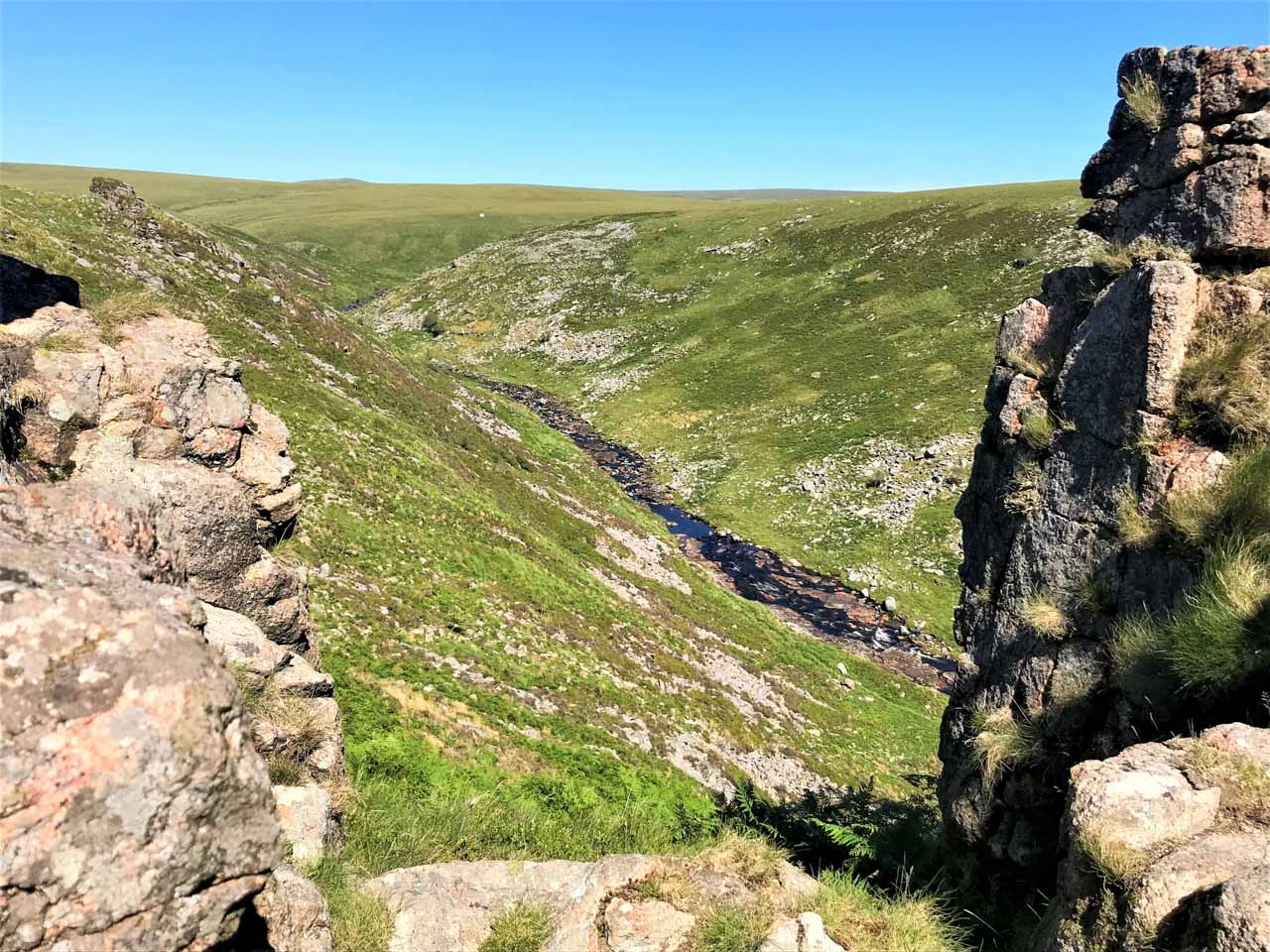
Photo: Tavy Cleave, Dartmoor.
Far below, the pools of the river are popular with wild bathers during the summer months. In winter you may have the landscape completely to yourself. I like to spend some time sat on the cliff taking it all in. For those who don’t suffer from vertigo there are a couple of nice thrones from which to survey your personal fiefdom from but do be careful as the drops are very real.

Photo: Looking down Tavy Cleave, Dartmoor.
During breeding season there are a handful of pairs of ring ouzels that nest around the Cleave and Ger Tor. These plucky upland birds are not a common sight in the lowlands of the UK and migrate here from the Atlas mountains of north Africa. Similar to a black bird but with a prominent white band across the chest it is a real treat to spot one.
The return journey has two options. You can trace your footsteps back across the high ground or from Tavy Cleave Tor head down the edge of the ravine until you reach the boulder strewn path beside the river. You can follow the beautiful Tavy and subsequently the leat around the bottom of Nat Tor and then walk along the field enclosure until you find the track from Nattor Farm which brings you back to the car park at Lane End.
If you are so inclined then you can’t do worse than an end of walk drink, a mile or so down the road, at the wonderfully cozy and intriguing Elephants Nest pub at Horndon. Alternatively a drive into the ancient moorland stannary town of Tavistock and a wander through The Meadows park to experience the Tavy in all its glory as it swells in size on its journey towards the River Tamar and the sea would also be a fitting end to the day.